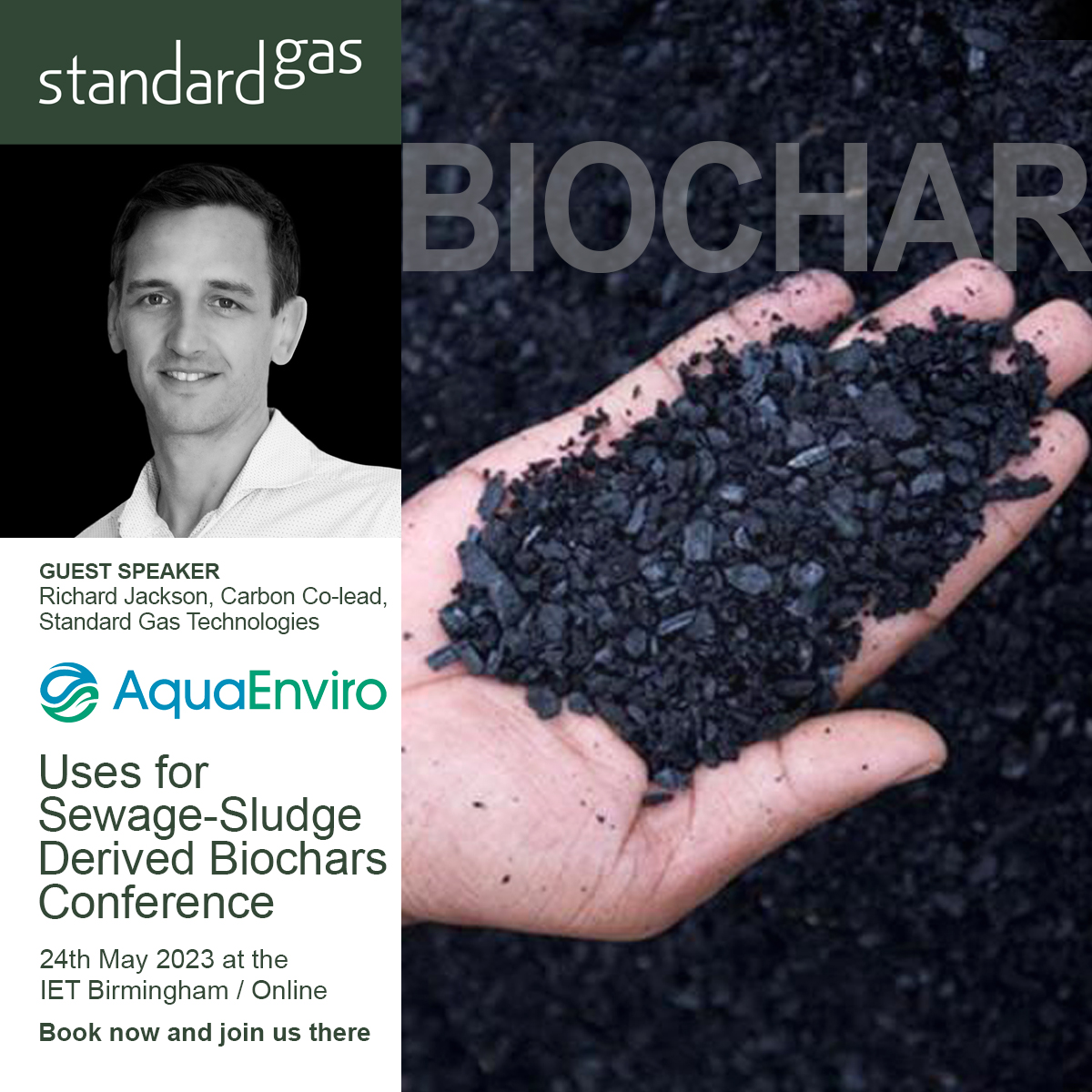“Our carbon-removing process can help solve water sector challenges,” says Standard Gas Director, Richard Jackson
“Our technology is uniquely effective and economic at processing many difficult and hard-to-reuse or recycle wastes,” says Richard, who is also the Company’s Carbon Co-Lead.
“Thanks to its patented design, our advanced thermal conversion process both removes carbon efficiently via co-product biochar and generates sustainable energy,” says Richard Jackson.
At the upcoming AquaEnviro conference Uses for Sewage Sludge-Derived Biochars on 24th May, Richard will explain how the Company’s technology can help the water utilities sector meet the challenge of sewage sludge management.
“While processing a waste like sewage sludge into biochar has been difficult but technically doable, it’s also been prohibitively expensive. But our technology offers both a practical and economic route to sewage sludge biochar that also generates significant energy. Furthermore, research and testing by our company and others indicates biochar can be sequestered in and help decarbonise products for construction and agriculture.”
Standard Gas’ technology combines the advantages of fast pyrolysis with a method for maximising the extractable energy from any carboniferous feedstock. Richard notes: “The water treatment sector has two problems not one: disposing of sludges that contain chemicals that survive existing treatments – and thus re-enter the environment; and doing so in a way that is economically viable. Our technology can solve both, offering a route for the sector to end land-spreading at an economic cost to the consumer.”
Details of the conference are here:
https://conferences.aquaenviro.co.uk/wp-content/uploads/sites/7/2022/12/Biochars-working-programme.pdf
TRANSITION TO NET ZERO WITH OUR CARBON-REMOVING TECHNOLOGY
Carbon Negative Energy: Each year, a single SG100 plant can generate up to 40,000 MW hours of carbon-negative power, enough for around 10,000 homes, offices or commercial properties, as well as for the transportation sector and wider industry.
Carbon Reduction: It will remove up to 16,000 tonnes of CO2e – equivalent to the annual carbon emissions of 5,000 cars. With electrolysis, a plant processing biogenic waste will generate over 650 tonnes of green hydrogen. And the SG100 closes the waste management loop, offering a better low carbon alternative to landfill and incineration.
Carbon Capture: TheSG100 technology also generates ‘biochar’ and ‘carbon char’, a black, granular, dust-like co- product that can be sequestered in valuable agricultural, environmental, and industrial applications.



